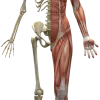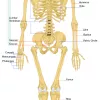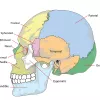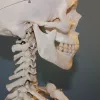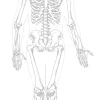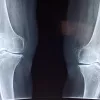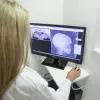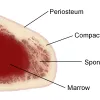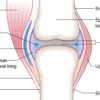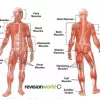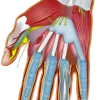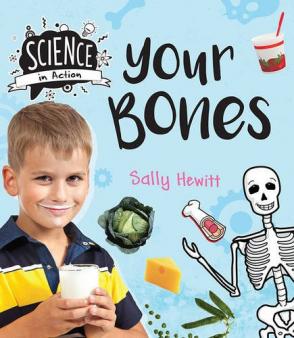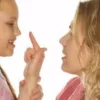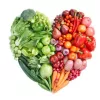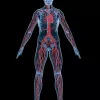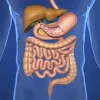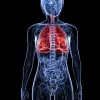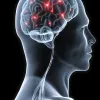Important update from TheSchoolRun
For the past 13 years, TheSchoolRun has been run by a small team of mums working from home, dedicated to providing quality educational resources to primary school parents. Unfortunately, rising supplier costs and falling revenue have made it impossible for us to continue operating, and we’ve had to make the difficult decision to close. The good news: We’ve arranged for another educational provider to take over many of our resources. These will be hosted on a new portal, where the content will be updated and expanded to support your child’s learning.
What this means for subscribers:
- Your subscription is still active, and for now, you can keep using the website as normal — just log in with your usual details to access all our articles and resources*.
- In a few months, all resources will move to the new portal. You’ll continue to have access there until your subscription ends. We’ll send you full details nearer the time.
- As a thank you for your support, we’ll also be sending you 16 primary school eBooks (worth £108.84) to download and keep.
A few changes to be aware of:
- The Learning Journey weekly email has ended, but your child’s plan will still be updated on your dashboard each Monday. Just log in to see the recommended worksheets.
- The 11+ weekly emails have now ended. We sent you all the remaining emails in the series at the end of March — please check your inbox (and spam folder) if you haven’t seen them. You can also follow the full programme here: 11+ Learning Journey.
If you have any questions, please contact us at [email protected]. Thank you for being part of our journey it’s been a privilege to support your family’s learning.
*If you need to reset your password, it will still work as usual. Please check your spam folder if the reset email doesn’t appear in your inbox.
Bones and muscles
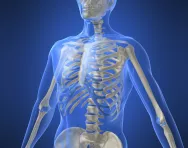
What are bones and muscles?
Underneath our skin are lots of things that make up our body. Two of these are bones and muscles. Bones shape our body and help us to stand up straight. Muscles are attached to bones; they help us walk and run and smile.
All the bones in our body make up our skeleton – from the top of our skull to the tips of the phalanges at the end of our toes. Muscles stretch across our bones and are attached with tendons. We use both our muscles and our skeleton to stand, write and even turn the pages when we’re reading a book.
Top 10 facts
Top 10 facts about bones:
- Together, the bones in our body are called the skeleton.
- There are 206 bones in the human body.
- The main bone in our head is called the skull.
- Bones have three parts, plus most have a substance deep inside called marrow.
- Bones need calcium to keep healthy – foods like milk, nuts and broccoli all have calcium in them.
- We get bigger and taller when our bones grow.
- Doctors can tell how healthy our bones are by measuring our bone density.
- In addition to muscles, we have joints between our bones to do things like moving our arm up and down, and turning our head.
- The longest bone in your body is called the femur, which is located in your thigh.
- When a bone breaks, it’s called a fracture. It really hurts!
Top 10 facts about muscles:
- Muscles make up almost half of how much we weigh.
- There are about 640 muscles in the human body. The most important one is the heart.
- There are three different kinds of muscles – skeletal, smooth and cardiac.
- Involuntary muscles like the heart move without us thinking about it.
- Voluntary muscles are found in places like our arms and legs – we decide when we want to move them.
- Muscles are attached to bones with tendons.
- If one of your tendons accidently gets pulled, it’s called a sprain.
- The largest muscle is called the gluteus maximus, in your bottom. It helps you walk.
- Muscles are mostly water – about 75%.
- Moving a muscle involves contracting it (pulling it) and relaxing it (letting it rest).

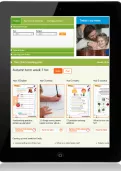
Boost Your Child's Learning Today!
- Start your child on a tailored learning plan
- Complete the activities added each week
- Watch your child's maths & English confidence grow!
Did you know?
Did you know… about bones:
- The skeleton has two main jobs to do – it supports us and protects our vital organs. When the skeleton and muscles work together, we can move around.
- When you were a baby, you had over 300 bones in their body – as you grew, some of the bones joined up which is why you have 206 bones now.
- The longest bone in your body is the femur – it’s about one-quarter of your height.
- The smallest bone in your body is the stirrup bone (stapes) inside your ear – it’s about one-quarter of a centimetre long.
- Giraffes and humans have the same number of bones in their necks! Giraffes’ bones are much longer than ours, though.
- Your hand has 27 different bones in it!
- It takes 1-2 months for a broken bone to heal.
- There’s one kind of fracture that’s only possible for kids to get – a bowing fracture. This is when a bone bends but doesn’t break.
Did you know… about muscles:
- There are more than 30 muscles in your face.
- The largest muscle in your body is in your bottom – it’s called the gluteus maximus.
- Muscles consist of about 75% water. The rest is made from fibres.
- Hold your arm out level with the ground. Now bend your arm so that your hand is pointing upwards. You’ve just contracted the muscle on the top of your arm, the bicep, and relaxed the muscle below your arm, the tricep. Now, move your arm back level with the ground – you’ve just relaxed the muscle on top of your arm and contracted the one below it.
- When you ‘make a muscle’, you’re actually contracting your bicep.
- A muscle cramp means that your muscle has contracted, but won’t relax again.
- Your tongue looks like just one muscle, but it’s actually lots of muscles working together.
- Moving your muscles burns energy, which you get from food. Burning energy creates heat, which is why you can feel warmer when you’ve been running around a lot.
Can you spot the following in the gallery of images:
- Bones and muscles under the skin
- A human skeleton with the names of the bones labelled
- Skull bones
- The vertebrae, the bones in the human spine
- A skeleton
- An X-ray of knees
- An X-ray of a person's jaw
- Cross-section of a bone
- A detailed diagram showing bones, muscles, tendons and ligaments (Credit: Madhero88 via Wikimedia)
- The muscles in the human body
- The muscles in a human hand
Gallery
About
Bones...
The skeleton acts like a shield for our vital organs, such as our brain and heart. The skull protects the brain, the ribcage protects the lungs and heart, and the backbone wraps all the way around the spinal cord.
Ligaments connect bones to other bones.
Bone density measures how healthy a bone is – it shows how much mineral matter there is in a square centimetre of bone.
Bone marrow is a tissue found inside bones. Bone marrow is part of the lymphatic system, which plays an important role in the immune system – how our body fights diseases.
Bones have three parts:
- The periosteum is a thin membrane on the outer surface – it contains the bone’s nerves and blood vessels.
- Underneath this is cortical bone – also called compact bone – which is smooth and hard.
- Cancellous bone is located in layers within compact bone – it’s sometimes called spongy bone because it has little holes in it.
There are six different kinds of fractures: complete, greenstick, single, comminuted, bowing and open. Doctors use x-rays to help them decide how to set the broken bones so they can join back up with new cells and blood vessels.
Bones need calcium to keep healthy. Calcium can be found in dairy products, dark green leafy vegetables, nuts, orange juice and soy.
Vitamin D helps the body and bones absorb calcium – fish and egg yolks both have vitamin D in them.
There are four main kinds of bones:
- Long
- Short
- Irregular
- Flat
Muscles...
There are three kinds of muscles – smooth, cardiac and skeletal.
Smooth muscles and cardiac muscles are also called involuntary muscles, because they move without you telling them to.
Skeletal muscles are also called voluntary muscles, because you can control when you move them.
When muscles feel sore, it can be because of a strain – the muscle fibres have torn a bit and need time to heal. This happens if you’ve picked up something very heavy, or if you’ve been doing a lot of running and jumping.
Another type of muscle injury is a sprain – this happens when a tendon is pulled.
There are four main muscle shapes:
- Spindle-shaped muscles, which are thick in the middle and thinner at the ends, such as your biceps and triceps in your arm
- Flat muscles, such in your forehead
- Triangular muscles, such as the deltoid muscles in your shoulder
- Circular muscles, which are shaped like rings, such as around your mouth
Words to know:
biceps – the muscles in your upper arms
calcium – the mineral that bones need to keep healthy
cancellous bone – a type of bone is located within layers of compact bone, and is sometimes called spongy bone because it has tiny holes in it
compact bone – the smooth, hard part of the bone underneath the periostium, which is what you’ll see when you look at a skeleton
deltoid – the muscles in your shoulders
fracture – the term for a broken bone; there are six different kinds of fractures: complete, greenstick, single, comminuted, bowing and open
involuntary muscles – muscles that you do not control, such as in your heart and stomach
ligaments – strong cords of tissue that connect bones to other bones
osteoporosis – a disease that causes bones to lose density, making them more likely to break
pelvis – the bones at our hips
periostium – the thin membrane covering the outside of the bone, containing nerves and blood vessels
ribcage – a series of connected horizontal bones in your chest that protect the heart and lungs
skeletal muscles – muscles attached to your skeleton with tendons
skull – the bones in our head that protect the brain
sprain – an injury called by pulling a tendon
strain – a muscle injury that can make them feel sore if you’ve picked up something very heavy, or done more running than you’re used to.
tendons – strong cords of tissue that connect muscles to bones
vertebrae – the bones surrounding our spinal cord
vitamin D – helps the body absorb calcium
voluntary muscles – muscles that you can control moving, such as the ones in your arms and legs
Related Videos
Just for fun...
- Take this quick BBC Bitesize quiz on muscles and the skeleton
- Download free skeletal system quizzes, puzzles and memory games from Curiscope
- Bone up on your skeleton knowledge with this fun quiz
- Complete the human skeleton by putting bones in the right places
- Try this quick, interactive muscle quiz
- How all the bones in our body work together
- This is a picture of a skeleton with all the bone names written in the spots where the bones actually are (suitable for Years 5 and 6)
- Play a skeleton and bone quiz!
Children's books about bones and muscles
Find out more:
- Facts about your bones and muscles
- See inside the human body and find out more about the skeletal system
- Find out about the number of bones in the body and what muscle is
- Facts about broken bones
- Watch BBC Bitesize videos about how muscles and bones work and how the human body grows
- Click on different parts of the skeleton for more information about individual bones and muscle anatomy
See for yourself
- Take a close look at the human skeleton
- This cartoon introduces the skeleton and explains about each main area.
- Learn all about the different kinds of muscles and what they do in this cartoon.
- Look inside bones in a virtual bone histology lab
